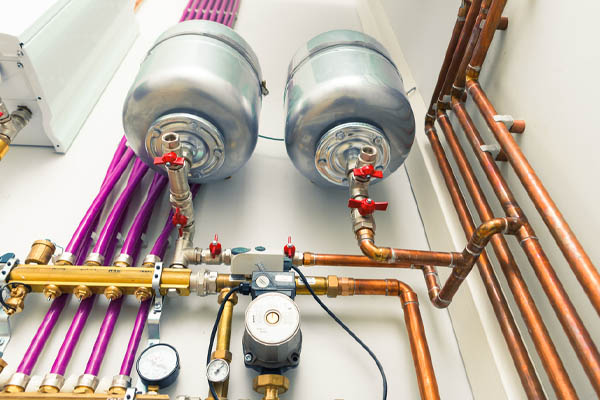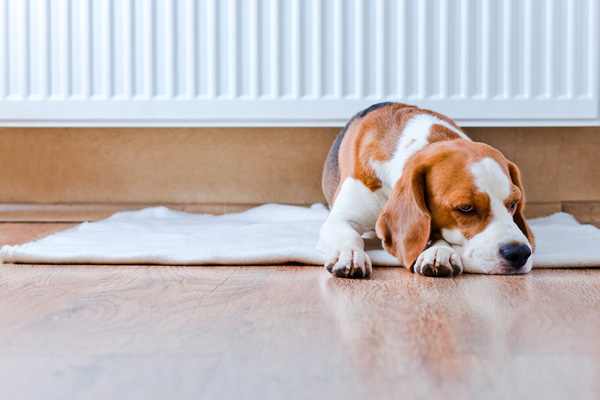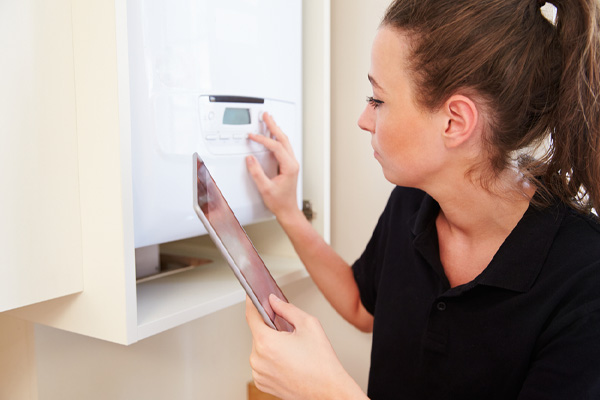Boiler Temperatures: How To Optimally Heat Your Home

It isn’t easy trying to figure out the right boiler temperature for your home’s central heating oil boiler. Since everyone has varying hot water needs and exterior temperatures fluctuate, boiler settings typically differ from one household to the next. However, knowing the typical temperature settings for the particular central heating boiler in your house ensures you can better identify the optimal temperature for your hot water cylinder or boiler. The following recommendations will help you efficiently and effectively heat your home.
3 Types of Central Heating Boilers
Contents
Before adjusting the temperature settings on your boiler, it’s helpful to understand exactly which central heating boiler you have. There are three main types.
1. Combination Boilers

Also called combi boilers, combination boilers are an increasingly popular choice for central heating systems since they provide both hot water and heating from a single unit. It works by using your home’s main water supply to feed the boiler with cold water. The boiler then creates heat within the combustion chamber by burning fuel. Using a heat exchanger, the heat is then transferred to the water. Combi boilers can heat up quickly because they use oil or gas to warm the water.
Unlike other boiler options, combi boilers are more compact since space for a separate water tank isn’t needed. This makes them the perfect solution for smaller properties. Even though combi boilers contain heating and hot water in a single unit, they can’t direct hot water to your tap and central heating at the same time. For example, if someone turns on a water outlet in your home, the hot water will temporarily redirect to the tap in use.
2. Regular Boilers
Sometimes referred to as a conventional or heat-only boiler, a regular boiler has three key components:
- The boiler
- A separate cold water storage tank, and
- A separate cylinder that stores the hot water
Generally, the cold water tank is installed in a loft space or attic. The system leverages gravity to fill the boiler. Once the boiler heats the water, it sends the hot water directly into the central heating system’s radiators and hot water cylinder, ensuring the home has hot water when it’s needed.
A regular boiler is best for larger properties. It’s also the better option for houses with a low-pressure water supply and multiple bathrooms. While the downside to conventional boilers is that they require more space, having separate water tanks means that the system can supply both heating and hot water simultaneously.
3. System Boilers
Similar to conventional boilers, system boilers give you heating and hot water on demand as they supply heating water to the radiators and store hot water in a cylinder. The difference is that these boilers only have a boiler and hot water cylinder. Instead of using a separate cold water tank, the main water supply of the home feeds water directly into the boiler.
Like conventional boilers, these boilers are also suited to large properties, especially those where hot water needs are high. Besides needing less space, installation options are more flexible because the components are internal. However, the hot water cylinder will still require sufficient space. In addition, the water flow rate through the home is dependent on the pressure of the main water supply.
Temperature Settings for a Central Heating Boiler
Unfortunately, there isn’t a specific temperature at which you need to set your central heating boiler. Instead, your boiler’s temperature will vary based on several factors, including your personal preferences and the weather. Ideally, the temperature should be kept within a certain range to avoid overheating and protect the boiler.
Temperature Setting Recommendations

The temperature settings for your hot water cylinder and the central heating water will differ.
When it comes to heating water, adjusting the high and low-temperature settings on your boiler according to whether the weather is warm or cold is the best approach. While winter creates the need for higher boiler temperatures, lower temperature settings during summer will make the boiler more efficient and your home feel more comfortable. Temperature settings between 120 and 160 degrees Fahrenheit are considered in the low range, while temperature settings between 180 and 200 degrees Fahrenheit are in the high range.
Try to stay around 200 degrees if you want the temperature to be warm. Anything over 212 degrees will cause your boiler to overheat, which can lead to boiler leakages or cause your boiler to burst.
Your hot water cylinder’s temperature settings will probably stay within the same range year-round. The ideal temperature range for this is between 140 and 150 degrees Fahrenheit, but you should ensure the temperature doesn’t get too low for health and safety purposes.
The problem is that Legionella bacteria grow in freshwater. It particularly thrives when the temperature is between 77 and 112 degrees Fahrenheit. This puts you at greater risk of contracting Legionnaire’s disease—a severe form of pneumonia. Therefore, the CDC warns the public to maintain a water temperature of at least 124 degrees in a heating cylinder.
How to Achieve Optimal Boiler Energy Efficiency
To heat your home properly and optimize energy usage, you should use temperature controls. The programmable thermostats and thermostats for individual rooms give you better temperature control in each room. For instance, you can keep your bedroom cooler than typically warmer rooms in your home. This ensures you can have a comfortable night of sleep.
Better yet, smart temperature controls not only adjust your home’s temperature automatically but also allow you to use your mobile device to access the controls. As a result, you can reduce your heat consumption when you’re not at home just by using these features. In addition, you can efficiently warm your home by setting the boiler’s temperature to fluctuate between four and five degrees at specific times of the day. While you’re not at home, a cooler house results in greater cost-effectiveness.
Finding the Right Furnace for Your Home by Calling Miller Oil Company

Hartford County, Connecticut locals can always expect superior HVAC services and recommendations from Miller Oil Company. This is because the technicians on our team have the absolute best certifications and training. They are knowledgeable, seasoned, and capable of meeting your maintenance, repairs, and replacement needs.
Working with Miller Oil Company is also an excellent way to limit your spending on heating and cooling services. We can provide maintenance services to improve the efficiency of the heating equipment you currently have. When you’re ready to start shopping for your options in furnaces or boilers, we can also help you find one with a high AFUE rating at an affordable price. Best of all, we’ll be sure to back our work up with a guarantee you can rely on. Call Miller Oil Company right away to set up an appointment. We can give you an in-home estimate at no cost.
Click here to contact us today or give us a call at (860) 745-0326 if you have any questions.